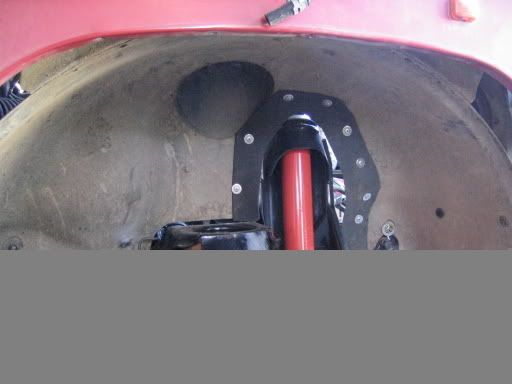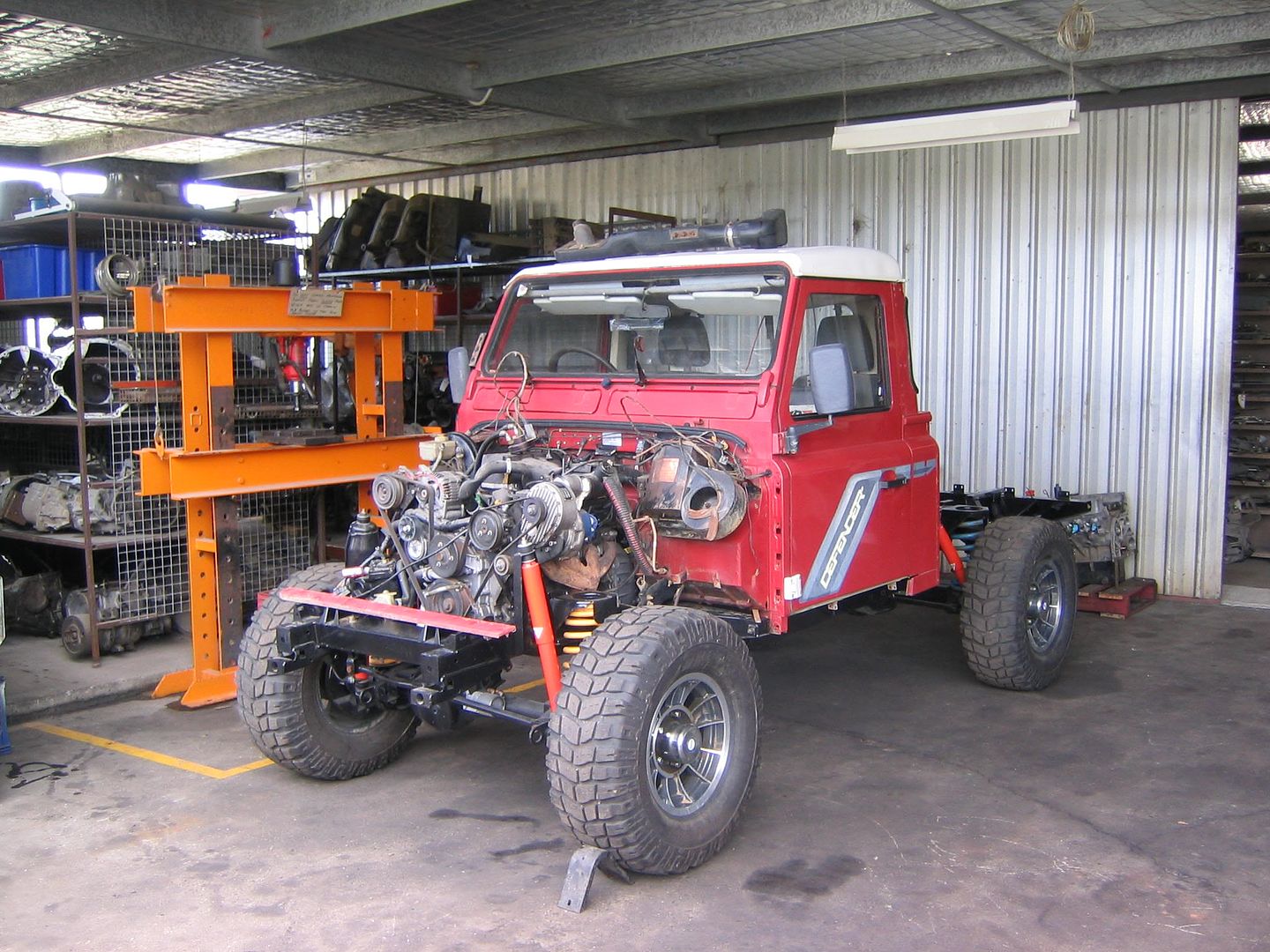
Do not use these Paddock spares twin shock mounts, unless you reinforce the outer edge of the spring seat and run a brace down to the chassis.
In that photo you can see 3 of the shock tower mounting holes, you can't see the 4th, most important one which is just behind the tube. For simplicity, call this hidden hole A, and call the other front mounting hole B.
Now, in standard from, both the spring and the single shock transmit force from impacts (corrugations, jumps, potholes etc) vertically and ONLY vertically into the spring seat, and therefore evenly distributed all round.
If you look at where the second shock bolts to, it is on a projecting arm that sticks forwards about 6-8inches. Any engineer will very quickly realise what is wrong here. The second shock is still vertical, and transmits vertical force into the end of that arm. Here the problem starts though - by the time the force has been transmitted into the main tower, it also has a rotational force due to the leverage of the arm. If you were to look at that left hand tower in the photo from exactly side on, the rotation would be anticlockwise.
The spring seat isn't supposed to take forces like this, Land Rover never engineered it for twin shocks, and so designed it only to take vertical loads. When the second shock causes a rotational force on the tower, the tower tries to lift its front edge, which is bolted down through the spring seat with a stupid little ring with studs, that sits on top of the spring. Basically you now have two shocks trying to pull that little ring through the spring seat - at the front edge only. This flexes the seat, and what now happens is the seat cracks through under the tower to hole 'A'. Now that its worked up a bit of flex, it continues to crack, along a stress line which can be drawn between hole 'A', the curved fold in the centre of the spring seat, to hole 'B'. From hole 'B', it then cracks forwards to the inner front corner of the seat. It also cracks along the front edge of the spring seat where it is folded from horizontal to vertical.
The end result is pretty easy to see at this point - in short order, the spring seat shears between the two rear mounting holes, and your twin shocks are stuffed up into your bonnet, one of them bends, and you now need to repair your chassis. Incidentally, the spring seat for a Defender is no longer available as a repair section from Land Rover (including Land Rover UK)
This happened to a Defender which is used extensively for touring, and had exactly those towers on it. The left hand spring seat was too badly mangled to see what had happened, other than it had removed itself, but close inspection of the right hand side revealed a small crack visible under the tower. Once the tower was removed, those two front crack lines I mentioned earlier were present (all the way though, the front edge was starting to open up), and it was cracked as far as the first mounting on the rear edge. Made the left hand side very clear, especially as to why a bit seemed to be missing - it was the inch wide strip that gets cracked either side of at the front.


